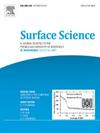Efficient parameterization of adsorbate–adsorbate interactions on metal surfaces
IF 2.1
4区 化学
Q3 CHEMISTRY, PHYSICAL
引用次数: 0
Abstract
Quantitative modeling of surface reactions relies on accurate potential energy surfaces that include adsorbate–adsorbate interactions. Using density functional theory calculations we introduce an efficient procedure to parameterize adsorbate–adsorbate interactions and present results for interactions between O2, O, OH and H2O on Pt, Ir, Rh and Pd surfaces. The targeted interactions are important when describing, for example, the electrochemical oxygen reduction reaction. However, an accurate representation of both non-directional interactions and directional hydrogen bonds remains challenging. By analyzing the dominant contributions, we find that accurate parameterizations can be constructed by separately considering surface mediated electronic interactions and pairwise hydrogen bonds. Two methods are evaluated to account for interactions beyond nearest-neighbors. Our work provides a general framework to analyze adsorbate–adsorbate interactions and present parameterizations suitable for efficient kinetic Monte Carlo simulations.

金属表面吸附物-吸附物相互作用的有效参数化
表面反应的定量建模依赖于精确的势能表面,包括吸附物-吸附物相互作用。利用密度泛函理论计算,我们引入了一个有效的过程来参数化吸附物-吸附物的相互作用,并给出了在Pt, Ir, Rh和Pd表面上O2, O, OH和H2O之间相互作用的结果。目标相互作用在描述时是重要的,例如,电化学氧还原反应。然而,非定向相互作用和定向氢键的精确表示仍然具有挑战性。通过分析主要贡献,我们发现可以通过单独考虑表面介导的电子相互作用和成对氢键来构建精确的参数化。评估了两种方法来解释最近邻之外的相互作用。我们的工作提供了一个总体框架来分析吸附物-吸附物相互作用,并提出适合于有效动力学蒙特卡罗模拟的参数化。
本文章由计算机程序翻译,如有差异,请以英文原文为准。
求助全文
约1分钟内获得全文
求助全文
来源期刊

Surface Science
化学-物理:凝聚态物理
CiteScore
3.30
自引率
5.30%
发文量
137
审稿时长
25 days
期刊介绍:
Surface Science is devoted to elucidating the fundamental aspects of chemistry and physics occurring at a wide range of surfaces and interfaces and to disseminating this knowledge fast. The journal welcomes a broad spectrum of topics, including but not limited to:
• model systems (e.g. in Ultra High Vacuum) under well-controlled reactive conditions
• nanoscale science and engineering, including manipulation of matter at the atomic/molecular scale and assembly phenomena
• reactivity of surfaces as related to various applied areas including heterogeneous catalysis, chemistry at electrified interfaces, and semiconductors functionalization
• phenomena at interfaces relevant to energy storage and conversion, and fuels production and utilization
• surface reactivity for environmental protection and pollution remediation
• interactions at surfaces of soft matter, including polymers and biomaterials.
Both experimental and theoretical work, including modeling, is within the scope of the journal. Work published in Surface Science reaches a wide readership, from chemistry and physics to biology and materials science and engineering, providing an excellent forum for cross-fertilization of ideas and broad dissemination of scientific discoveries.
 求助内容:
求助内容: 应助结果提醒方式:
应助结果提醒方式:


